Like in many of the best stories of trailblazing artists, Erick Calderon – better known in the NFT space as Snowfro – could have never imagined the wide-reaching success he would see as the founder and genesis artist of the historic generative art platform, Art Blocks.
“I still wake up thinking that this is a dream. I had no expectations of it getting this big.”
He spoke to NFTevening shortly after the momentous occasion of the opening of his Chromie Squiggles exhibition at Venus Over Manhattan on Feb. 12th. At this time, Snowfro reflected on his incredible journey so far. And how his love for generative art and the blockchain has carried him, and the Art Blocks platform he founded, to heights very few artists in the space have reached.
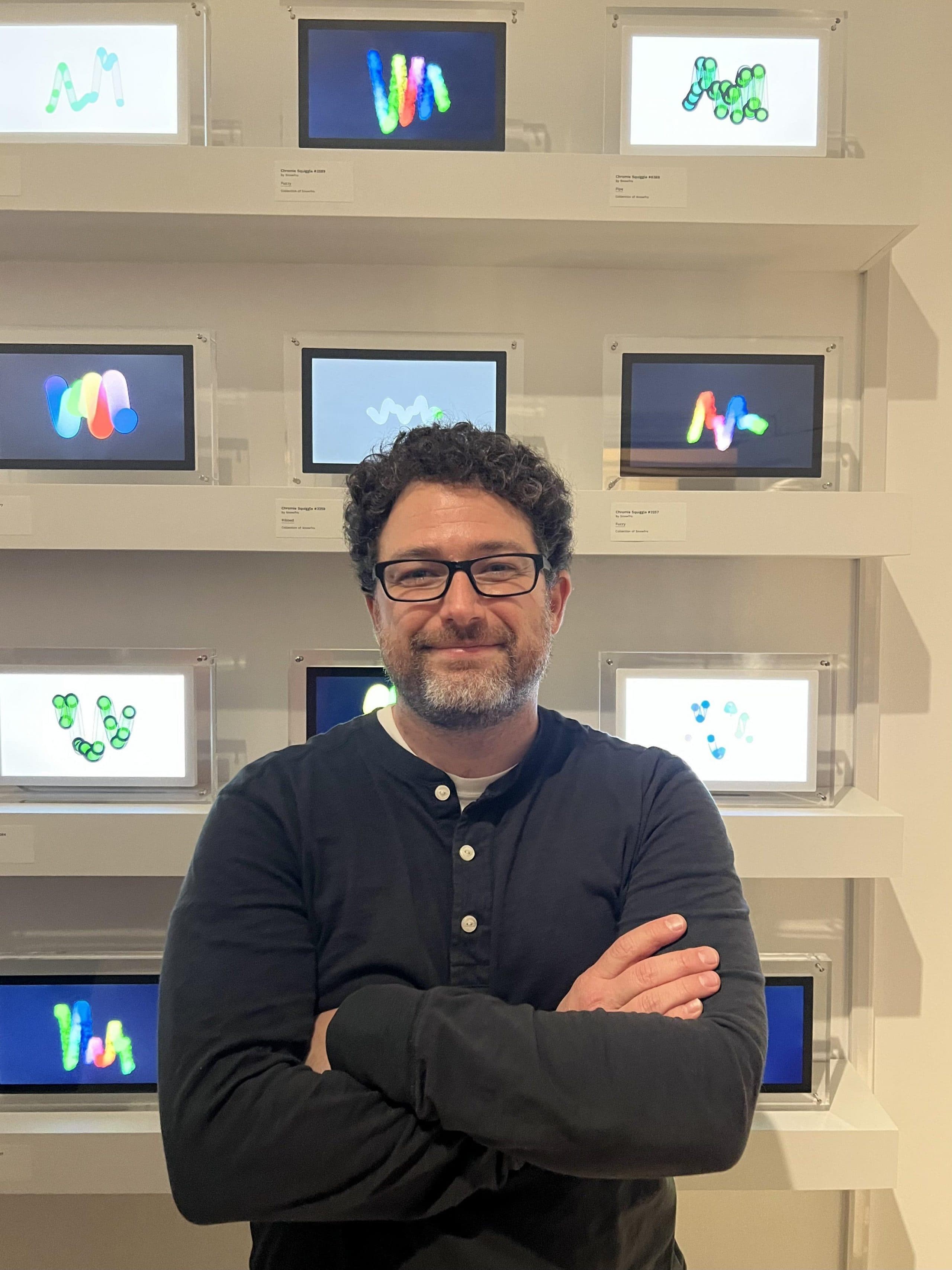
Quotes are condensed and edited for clarity.
The story of Art Blocks begins with an art display at Coachella
Many people can track their involvement in Web3 to a specific eureka moment. For Snowfro, the journey to becoming an artist and the founder of Art Blocks is a chain of events. One where each process of discovery and experimentation informed and influenced the next.
Indeed, Snowfro calls the circumstances that led him to where he is today “a perfect storm.” An apt description to be sure. And that storm started with his experience of one inspiring artist.
“It started about 10 years ago. I went and saw [musician and projection mapping artist] Amon Tobin at Coachella. I saw one of his pieces and it was just this beautiful projection.”
To sum up, projection mapping is an art form that involves using objects – whether irregular shapes, sculptures, or even buildings – as surfaces for video projection. And after that fateful Coachella display, projection mapping had Snowfro completely captivated. As he puts it, “I came home and decided I couldn’t think of anything I wanted to do more than to learn how to do projection mapping.”
Snowfro began to experiment with projection mapping and generative art
There was just one stumbling block. The 3D modeling necessary for conventional projection mapping would require a distinct knowledge base and level of training. Something that Snowfro didn’t have at the time. “I realized that I was never going to be able to achieve that level of detail unless I was just going to switch careers.”
Undeterred by what might’ve been a deal-breaker for others, Snowfro looked to skills he already had. Ones he could utilize to at least do some version of the art form he had fallen in love with. And so he decided to draw on the decades of experience he had from his longtime hobby of programming. Eventually, he settled on a visual programming software called TouchDesigner.
Although the program wasn’t exactly perfect for what he wanted to do, he was able to “get in there granularly and create my own projection mapping installations.” These early installations didn’t have full-on 3D visuals but were an early foray into the colorful, kaleidoscopic style that found its way into the artworks he is now primarily famous for.
His first artistic displays were at music events. He would collaborate with DJs – manually controlling the visual effects behind them with an iPad. It was while doing those shows that he decided that he wanted the projections to be randomized, rather than controlling them himself.
This led to him creating his own software that would generate and project colorful shapes onto different 3D objects. Of course that led him much deeper into coding. And as fate would have it, this couldn’t have come at a better time.
Snowfro’s deepening interest in generative art synced up with his discovery of the blockchain
One of the major synchronistic parts of Snowfro’s story is that, right as he was diving deeper into generative art, he also started to learn about the blockchain.
“I learned about Ethereum, and the blockchain blew my mind. [The fact] that you could program money. Then around the same time I learned about Ethereum, I got really excited about NFTs.”
As it happened, something major was brewing right as he was getting excited about the blockchain. Namely, the launch of the NFT collection that ended up paving the way for all generative NFT collections to follow. That project, of course, was Larva Labs’ CryptoPunks.
While some people’s opinions on Larva Labs may have soured in recent months, Snowfro speaks of the project with great admiration. By the same token, he credits Larva Labs for the groundbreaking nature of its creation.
“CryptoPunks are generative art. And that was the first moment where I saw a correlation between generative art, in terms of massive amounts of outputs, and controlling the way that they’re distributed to people.”
The final piece of the puzzle? The ephemeral nature of Instagram
Like so many of us, Snowfro used social media to keep tabs on his favorite creators making generative art. The algorithmic outputs that projection mapping artists were putting out on Twitter, and on Instagram especially, were a source of unending inspiration for him. There was just one major issue that he saw with the platform.
“These people would post a brilliant f—ing artwork on Instagram one day. And then the next day they post another one, and the one from before was just kind of forgotten. Yeah, it was eternalized on Instagram, but what does it mean to eternalize art on Instagram?”
Of course by this time he was already deep into his exploration of the blockchain. In fact, this question arising from Instagram – of how to eternalize generative art – was the last piece of the puzzle. His attempt to answer that question was what finally led to his wanting to create Art Blocks. In his words,
“Right around the beginning of 2018, I was like, okay, this is what I want to do. I want to create this platform where people that are creating beautiful works of art can do it in a way that has provenance. Because that hadn’t really existed in generative art.”
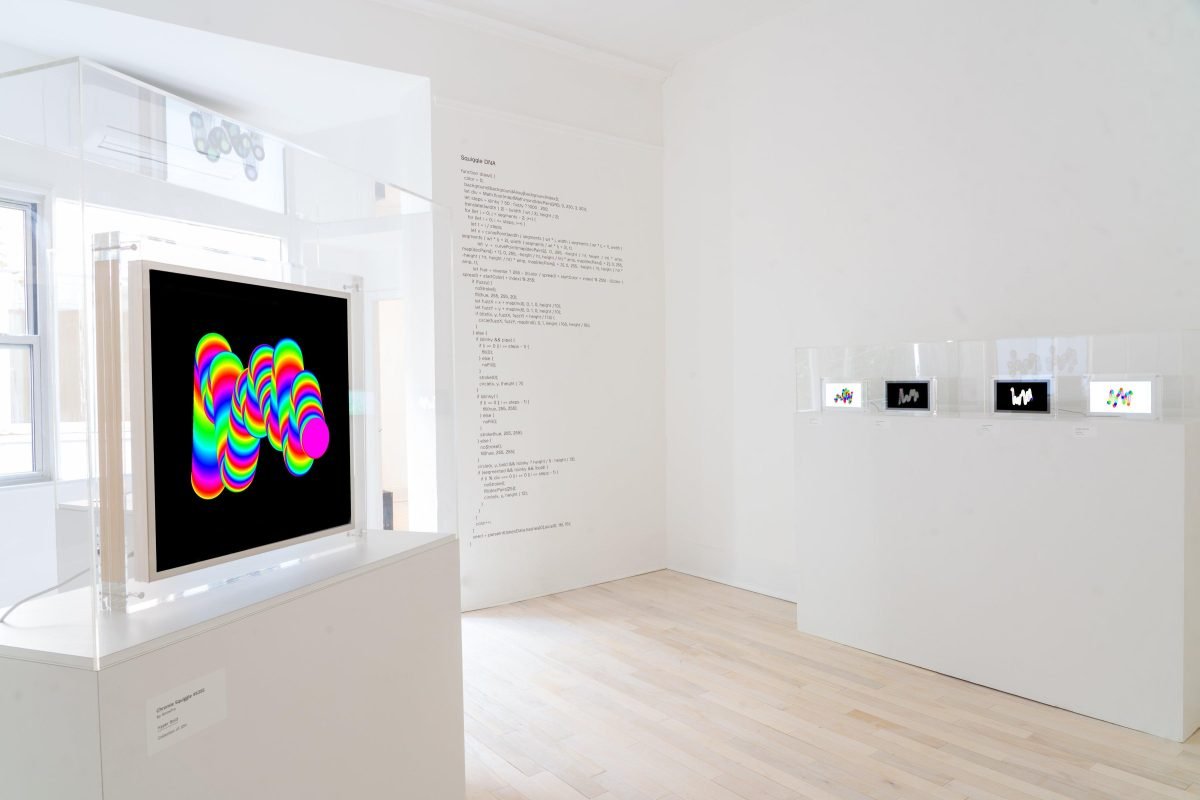
Financial success and popularity came to Art Blocks in a big way – but it was never the primary goal
Without a doubt, Art Blocks has since become the biggest name in generative art on the blockchain. The NFTs that make up its curated collection are some of the most sought-after in the space. And its three most prominent projects – Dmitri Cherniak’s Ringers, Tyler Hobbs’ Fidenzas, and Snowfro’s Chromie Squiggles – have all seen pieces sell for ETH amounts that equate to millions of dollars.
Given this enormous amount of success and notoriety, it may come as a surprise that it took some time for Snowfro to get other artists on board for the Art Blocks concept. He laughs as he recalls,
“Nobody cared. Especially the artists… Some of these artists that are hugely successful on Art Blocks today; When I went to congratulate them after their drop, on Twitter or Reddit or whatever, there’d be a message from me to them in 2017/18 rambling about [Art Blocks]. They didn’t even reply to me, it was that crazy of an idea.”
At the end of the day, what he had always been focused on, was what the Art Blocks platform could do for the field of generative art.
“I really felt like whether or not this became popular, it would be a viable way of documenting digital art created with code. At least during this time period.”
Art Blocks’ August 2021 surge changed everything for its founder
By his own admission, Snowfro launched the platform with his Chromie Squiggles, and two other projects “with no expectations that anybody was going to give a s–t”. The platform launch was a success though, and it continued to grow.
This growth went into hyperdrive in August 2021, nearly a year after launch. It was then that sales of projects on Art Blocks started to skyrocket. To illustrate, according to CryptoSlam the platform saw a trading volume of over half a billion dollars in that month alone. At that point, it was obvious that Art Blocks was onto something game-changing.
“Whether it was for speculative reasons or not, there was a community forming and our users were growing. I got this feeling and it was time to really dedicate myself full time to Art Blocks.”

The Chromie Squiggle by Snowfro – An accidental iconic artwork
One of the best revelations to come from our conversation was the fact that Snowfro’s iconic Chromie Squiggle, the artwork that most singularly defines Art Blocks, was not initially meant to be on the platform! In fact, Snowfro first devised the Squiggle simply as a proof of concept. Its unique shape and generative spectrum of color were perfect for pitching the platform to other artists.
“The Chromie Squiggle was never going to be on Art Blocks. It was a proof of concept that I used two or three years ago to demonstrate to other artists the infinite variability of what can be achieved using a blockchain.”
Luckily for Snowfro, enough people who saw the Squiggles in those early stages loved it so much that he had to reconsider.
“People would reach out and say, You know, this feels strangely iconic. It just felt more meaningful and less proof of concept as I approached the launch. Talking to friends, they said that this had to be project zero.”
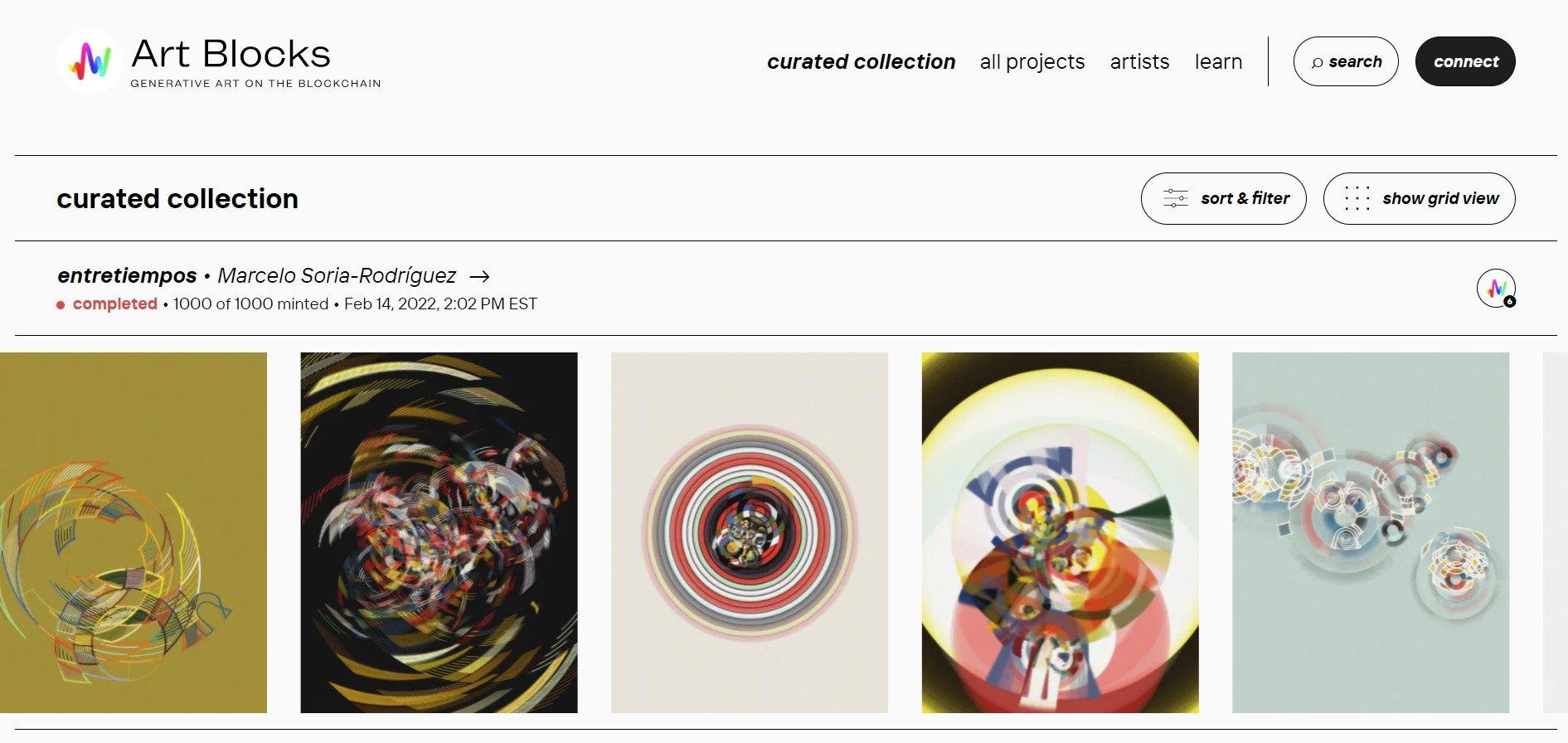
The Art Blocks founder believes that blockchain art is here to stay
All in all, Snowfro is driven by a passion for art, a desire to expand avenues for artists, and an appreciation for everything the blockchain has to offer when it comes to how we approach art.
That love for the crypto art movement also informs his approach when it comes to addressing people who decry the space as a fad. Ultimately he welcomes those conversations.
“There’s nothing I thrive more on than being able to dissect their concerns [about art on the blockchain] into an understanding; That we have a new technology here, that is enabling the documentation of art.
And I am just so sorry to let them know that humans are not going to be like, Oh, that was really cool that we can have this work of art, know exactly when it’s authentic and when it’s not. But let’s just forget about that and move on.“
Are you tired of missing important NFT drops?
Just check out our NFT Calendar !
We summarize the biggest news of the day :
All investment/financial opinions expressed by NFTevening.com are not recommendations.
This article is educational material.
As always, make your own research prior to making any kind of investment.



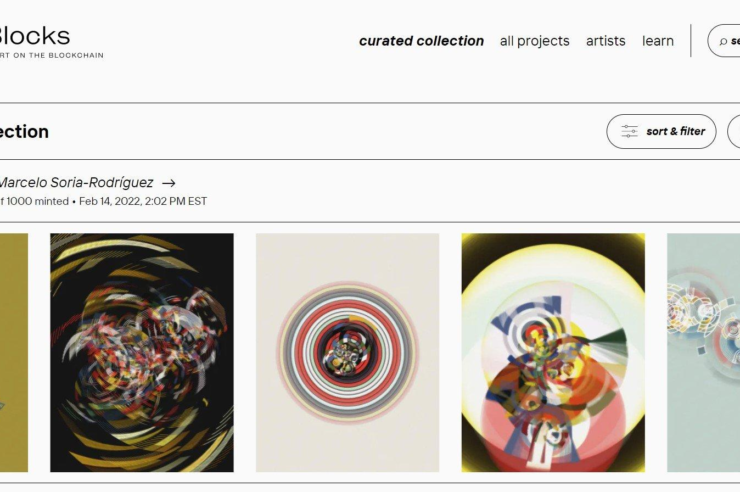
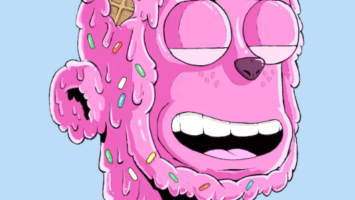
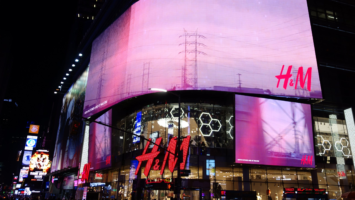
















Comments (No)